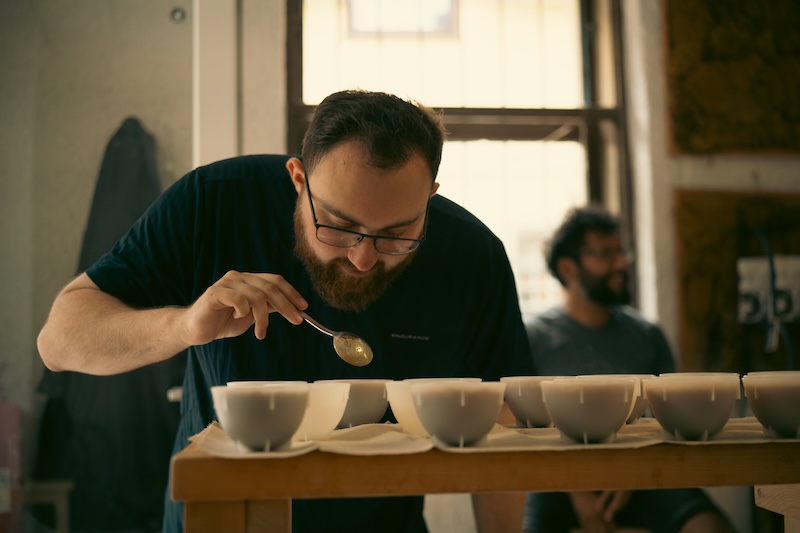ALL POSTS
ALL POSTS
5 Facts About Coffee Beans
3 min read
Last edit: Jan 9, 2025

Beginning their day with a cup of aromatic coffee, most people do not consider what lies behind this unique taste and aroma. In fact, coffee beans are a really interesting thing; you can look at it from different angles and be amazed by how much lies behind this seemingly common drink. Avid coffee drinkers may think that they know all about coffee, but they are usually wrong. Few people know about all the properties of coffee beans, where did coffee originate and its applications in other areas. However, we have selected five coffee facts specifically for you. We hope that after reading these fun facts about coffee, you won’t be able to look at your morning cup of coffee the same way again.
Fact 1 – where did coffee originate?
Ethiopia is regarded as the birthplace of coffee beans, where they were initially found. In this context, a legend exists. According to this legend, a young shepherd named Kaldi noticed an extraordinary vitality in his sheep after grazing them in a specific area where coffee bushes grew. Kaldi personally sampled the fruits of these bushes and experienced a surge of liveliness and energy. Consequently, coffee was serendipitously discovered, all thanks to the keen observation and ingenuity of the Ethiopians.
As a result, he told the local monks about his observations, so they, in turn, became highly intrigued by the qualities of coffee beans. Since then, they began to use coffee in rituals and some spiritual practices. Gradually, roasting technology was invented and a famous drink appeared, which became popular first in this region and then throughout the world.
Fact 2 – coffee beans are technically seeds!
We may use the terms “coffee beans” and “coffee seeds,” but they refer to different stages in coffee production.
When people mention coffee beans, they are actually referring to the seeds inside the coffee fruit. These seeds resemble beans but are indeed seeds. Coffee is prepared from these seeds.
When people discuss coffee beans, they typically mean coffee seeds after roasting, during which they change color, turning brown or black, and take on a bean-like appearance. At this point, they acquire their aroma and flavor.
Fact 3 – two types of coffee beans
Despite the wide variety, there exist two primary types of coffee beans: Arabica and Robusta. These 2 types of coffee have different tastes and are grown in different regions and at different altitudes.
Arabica, often known as “shade-grown coffee,” is the more commonly cultivated coffee bean. In contrast, Robusta is somewhat more bitter and is referred to as “sun-grown coffee.”
Arabica is considered a more premium type of coffee bean. It grows at an altitude of 600 to 2000 meters above sea level and thanks to this it has a more complex and delicate taste. Its ratio is approximately 65% of all world coffee.
Robusta is typically grown at altitudes up to 600 meters above sea level. It is stronger and more bitter than Arabica and usually contains higher caffeine levels.
Fact 4 – the most enthusiastic coffee consumers
It’s unsurprising that Brazil, the largest coffee producer, is also the largest consumer of this beverage in terms of sheer quantity. This country produces huge volumes of coffee beans, only about 40% of the world’s total. Coffee for Brazilians is no longer just a drink but a distinct part of their traditions and culture.
But what’s even more intriguing is that when considering per capita consumption, the foremost coffee enthusiasts are… the Finns! On average, a Finnish resident consumes around 12 kilograms of coffee per year. Sweden, Denmark, Norway, the Netherlands – all these countries are not far behind Finland. All these countries possess rich coffee cultures and traditions associated with this beloved beverage.
Fact 5 – coffee beyond consumption
Coffee is a truly versatile and unique product with applications extending beyond drinking:
Cosmetics: Coffee is frequently incorporated into cosmetic products like scrubs and masks. When used externally, coffee has many medicinal properties, it relieves skin inflammation, enhances skin health and boosts blood circulation.
Culinary Uses: Coffee beans are also known as a culinary ingredient. It’s impossible to imagine desserts like tiramisu without the distinctive coffee flavor.
Perfumery: Coffee aromas add a unique depth and richness to perfume compositions. The coffee note is often called a “coffee accord” in perfumery. It gives the aroma warmth, comfort, and a little mystery.
Medicine: Coffee can be utilized to alleviate pain, treat headaches, and as an ingredient in medicinal preparations.
Thus, coffee beans not only have a wonderful aroma and taste but also hide many interesting facts behind them. You’ve just read 5 of the many facts, and we hope that after reading this article, you will appreciate this wonderful drink a little more. Drink coffee with pleasure and enjoy its variety!
Would you like to learn more about other coffee roasters in Slovenia? Here are the guides.









